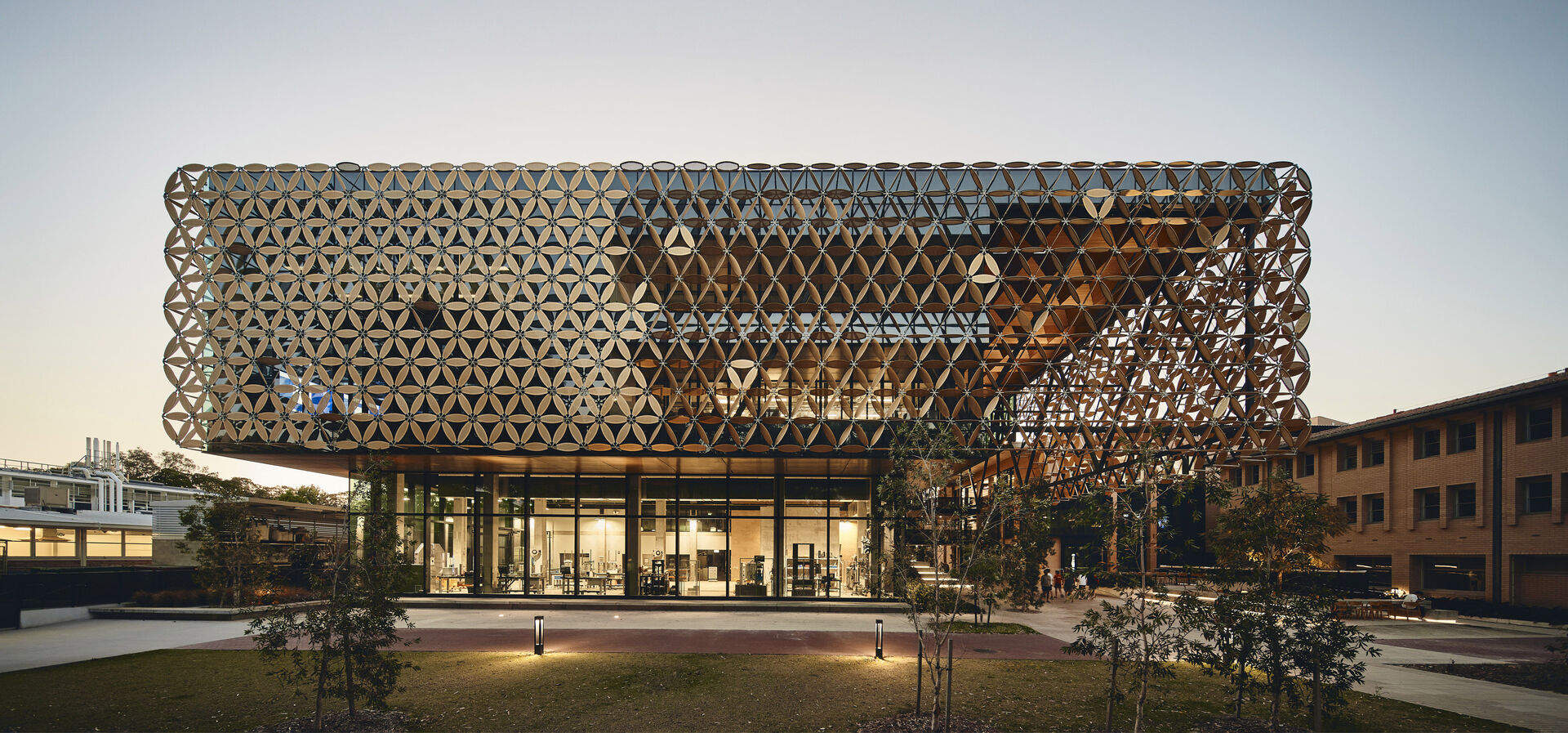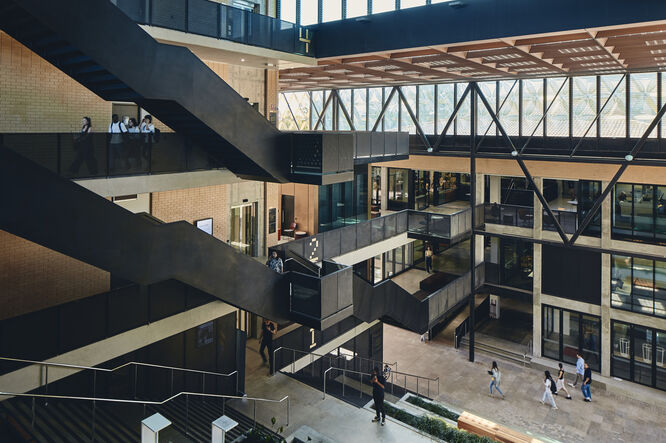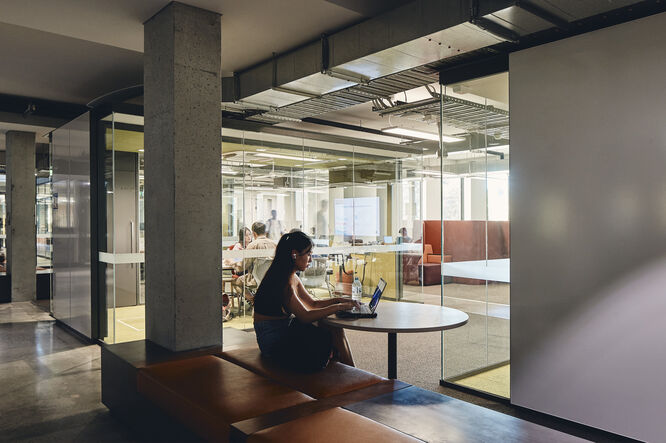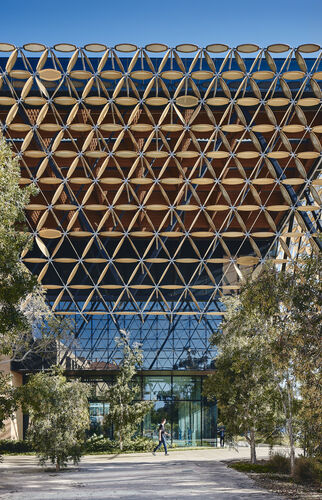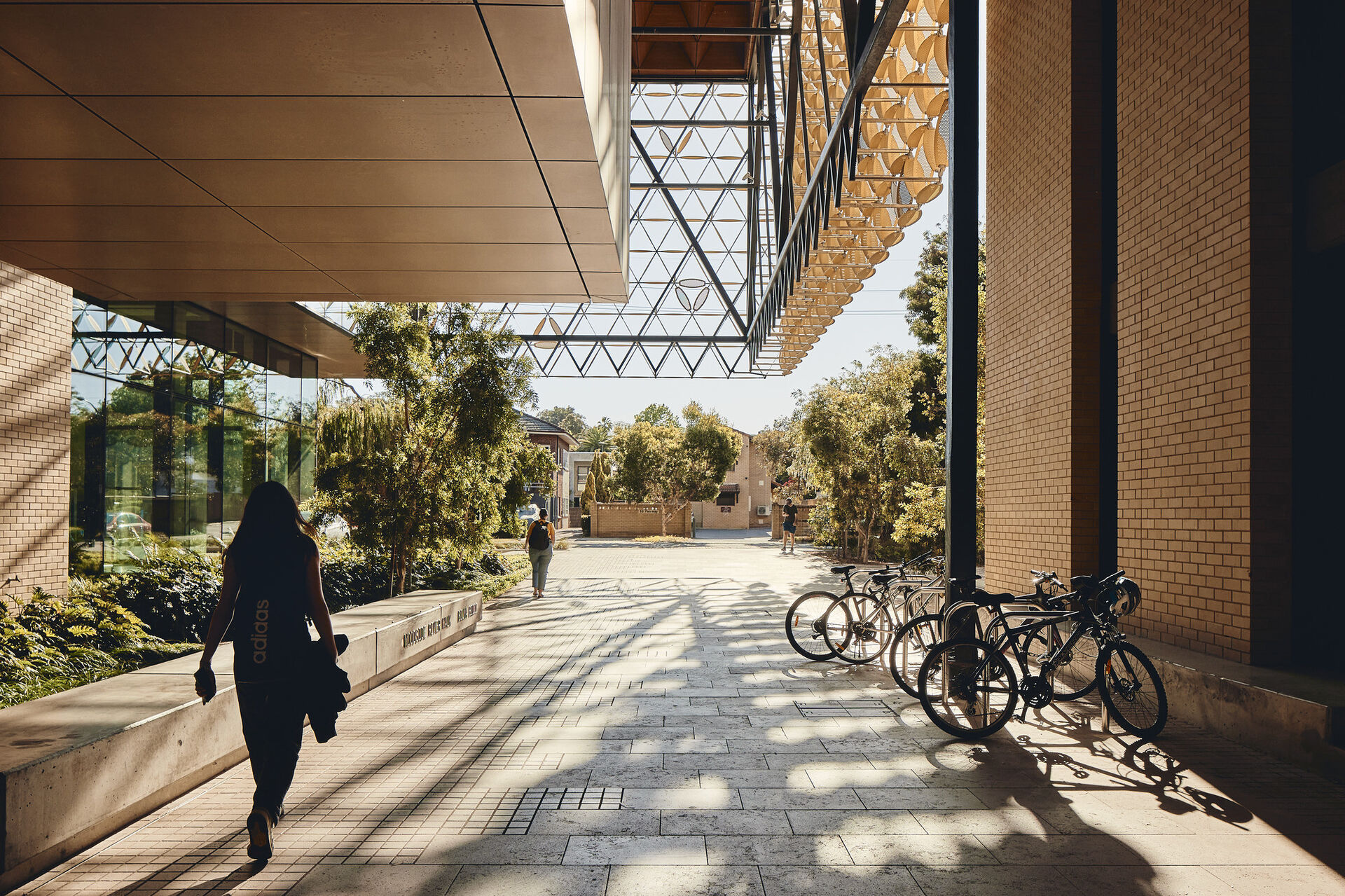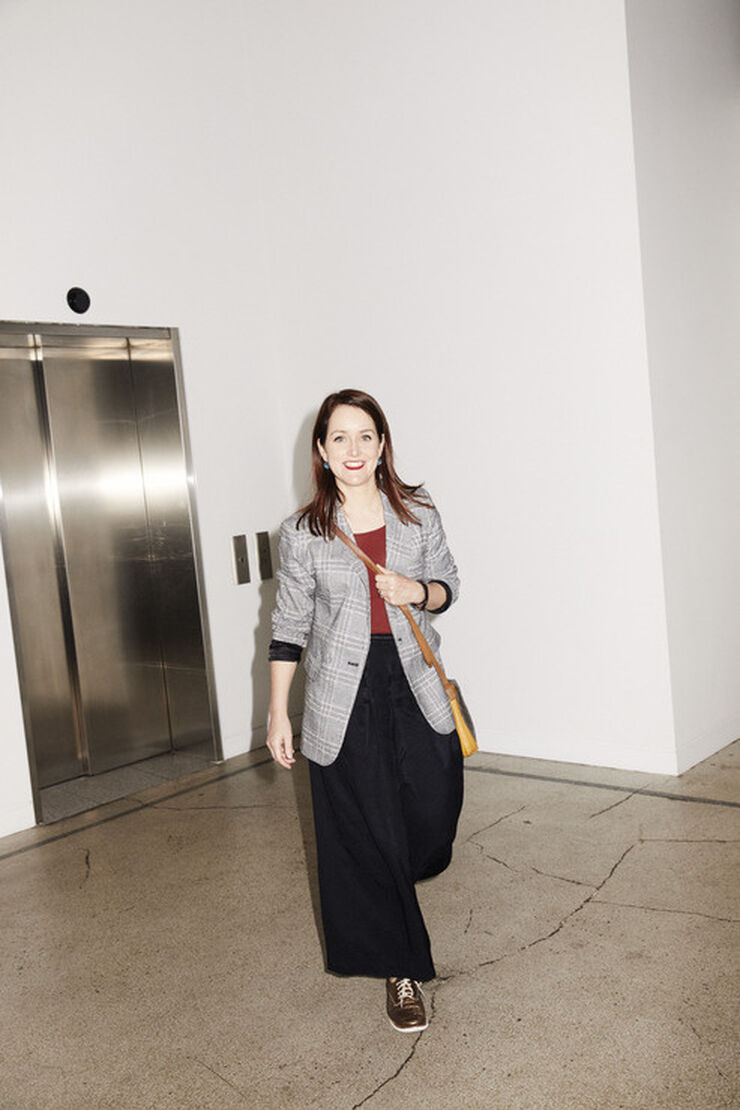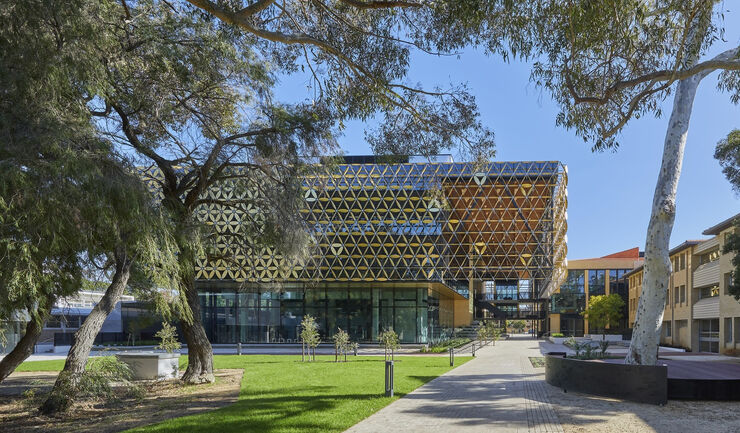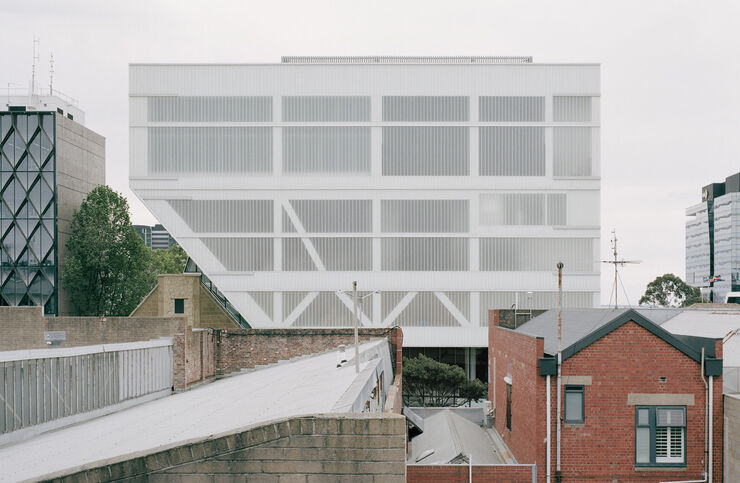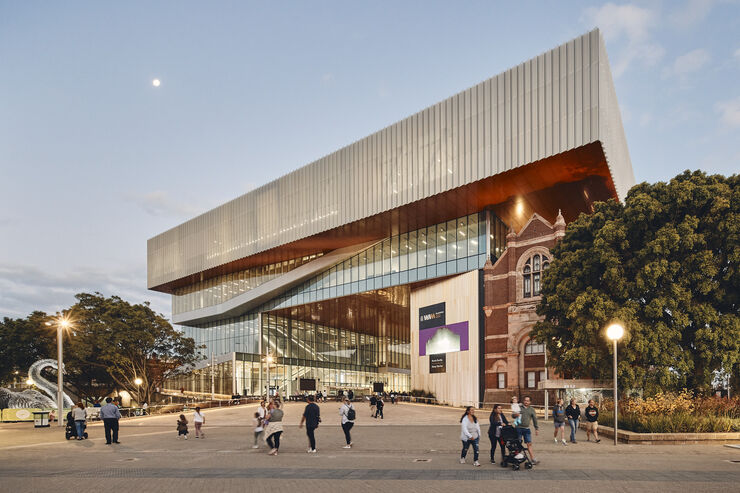Sustainability highlights
- Internal spaces are strategically oriented to incorporate self-shading west and east setbacks for the laboratory areas. Automated blinds and balcony areas further contribute to shielding east and west elevations.
- The spaces are designed to be adaptable and capable of adjusting to changes in function and occupancy.
- The veil façade surrounding the new building mitigates glare and heat through shading petals orientated to suit their location.
- Thermal mass elements are included to store coolness and help regulate temperatures to maintain a comfortable environment.
- The design includes large, open roof areas and a semi-outdoor circulation strategy that is not air-conditioned. Partial sun exclusion is achieved through PV cells, allowing dappled light to filter into the EZONE Central precinct.
- The use of high-end technology throughout the design includes digital twin embedded sensors that collect data for investigation and research.
- A campus-wide central plant strategy extends the infrastructure for chilled water supply into EZONE and provides a masterplan for future connections throughout the university.
- The design places a central emphasis on human-centric principles, prioritising inclusive access to social spaces, collaborative environments, natural light, shading and connections to nature as fundamental design elements rather than optional additions.
- Retention of existing trees, addition of new trees and extending the landscape up to, and even inside the building.
Design for togetherness
According to a University of Western Australia study, EZONE has notably influenced student behaviour.
- 80% of students are studying more in groups
- 71% are spending extended time on campus
- Over 15,000 students have booked sessions in meeting spaces for collaborative projects since EZONE’s opening
Awards
- 2022 Special Interior Design award, Campus Category — Prix Versailles Awards
- 2021 Hillson Beasley Award for Educational Architecture — Australian Institute of Architects (WA)
- 2021 Award for Sustainable Architecture — Australian Institute of Architects (WA)
